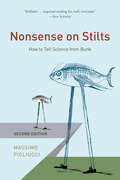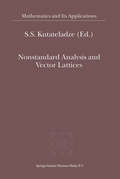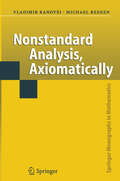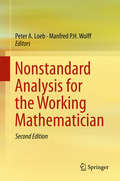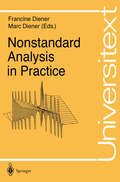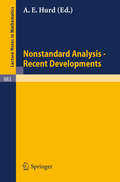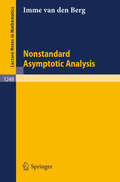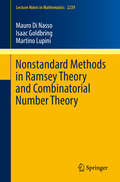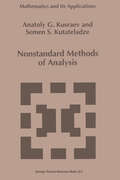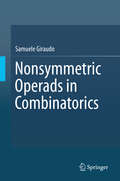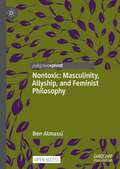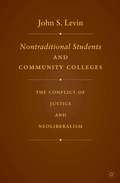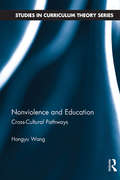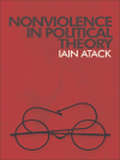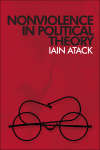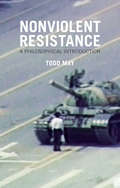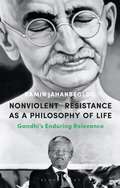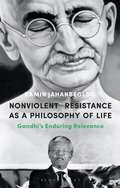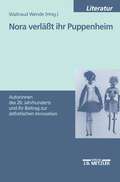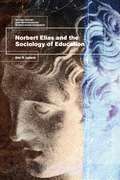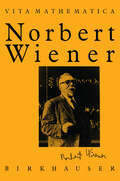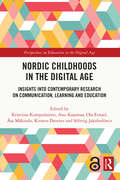- Table View
- List View
Nonsense on Stilts: How To Tell Science From Bunk
by Massimo PigliucciRecent polls suggest that fewer than 40 percent of Americans believe in Darwin’s theory of evolution, despite it being one of science’s best-established findings. Parents still refuse to vaccinate their children for fear it causes autism, though this link has been consistently disproved. And about 40 percent of Americans believe that the threat of global warming is exaggerated, including many political leaders. In this era of fake news and alternative facts, there is more bunk than ever. But why do people believe in it? And what causes them to embrace such pseudoscientific beliefs and practices? In this fully revised second edition, noted skeptic Massimo Pigliucci sets out to separate the fact from the fantasy in an entertaining exploration of the nature of science, the borderlands of fringe science, and—borrowing a famous phrase from philosopher Jeremy Bentham—the nonsense on stilts. Presenting case studies on a number of controversial topics, Pigliucci cuts through the ambiguity surrounding science to look more closely at how science is conducted, how it is disseminated, how it is interpreted, and what it means to our society. The result is in many ways a “taxonomy of bunk” that explores the intersection of science and culture at large. No one—neither the public intellectuals in the culture wars between defenders and detractors of science nor the believers of pseudoscience themselves—is spared Pigliucci’s incisive analysis in this timely reminder of the need to maintain a line between expertise and assumption. Broad in scope and implication, Nonsense on Stilts is a captivating guide for the intelligent citizen who wishes to make up her own mind while navigating the perilous debates that will shape the future of our planet.
Nonstandard Analysis and Vector Lattices (Mathematics and Its Applications #525)
by Semën Samsonovich KutateladzeNonstandard methods of analysis consist generally in comparative study of two interpretations of a mathematical claim or construction given as a formal symbolic expression by means of two different set-theoretic models: one, a "standard" model and the other, a "nonstandard" model. The second half of the twentieth century is a period of significant progress in these methods and their rapid development in a few directions. The first of the latter appears often under the name coined by its inventor, A. Robinson. This memorable but slightly presumptuous and defiant term, non standard analysis, often swaps places with the term Robinsonian or classical non standard analysis. The characteristic feature of Robinsonian analysis is a frequent usage of many controversial concepts appealing to the actual infinitely small and infinitely large quantities that have resided happily in natural sciences from ancient times but were strictly forbidden in modern mathematics for many decades. The present-day achievements revive the forgotten term infinitesimal analysis which reminds us expressively of the heroic bygones of Calculus. Infinitesimal analysis expands rapidly, bringing about radical reconsideration of the general conceptual system of mathematics. The principal reasons for this progress are twofold. Firstly, infinitesimal analysis provides us with a novel under standing for the method of indivisibles rooted deeply in the mathematical classics.
Nonstandard Analysis, Axiomatically (Springer Monographs in Mathematics)
by Vladimir Kanovei Michael ReekenIn the aftermath of the discoveries in foundations of mathematiC's there was surprisingly little effect on mathematics as a whole. If one looks at stan dard textbooks in different mathematical disciplines, especially those closer to what is referred to as applied mathematics, there is little trace of those developments outside of mathematical logic and model theory. But it seems fair to say that there is a widespread conviction that the principles embodied in the Zermelo - Fraenkel theory with Choice (ZFC) are a correct description of the set theoretic underpinnings of mathematics. In most textbooks of the kind referred to above, there is, of course, no discussion of these matters, and set theory is assumed informally, although more advanced principles like Choice or sometimes Replacement are often mentioned explicitly. This implicitly fixes a point of view of the mathemat ical universe which is at odds with the results in foundations. For example most mathematicians still take it for granted that the real number system is uniquely determined up to isomorphism, which is a correct point of view as long as one does not accept to look at "unnatural" interpretations of the membership relation.
Nonstandard Analysis for the Working Mathematician (Mathematics And Its Applications Ser. #510)
by Peter A. Loeb Manfred P. H. WolffStarting with a simple formulation accessible to all mathematicians, this second edition is designed to provide a thorough introduction to nonstandard analysis. Nonstandard analysis is now a well-developed, powerful instrument for solving open problems in almost all disciplines of mathematics; it is often used as a ‘secret weapon’ by those who know the technique.This book illuminates the subject with some of the most striking applications in analysis, topology, functional analysis, probability and stochastic analysis, as well as applications in economics and combinatorial number theory. The first chapter is designed to facilitate the beginner in learning this technique by starting with calculus and basic real analysis. The second chapter provides the reader with the most important tools of nonstandard analysis: the transfer principle, Keisler’s internal definition principle, the spill-over principle, and saturation. The remaining chapters of the book study different fields for applications; each begins with a gentle introduction before then exploring solutions to open problems.All chapters within this second edition have been reworked and updated, with several completely new chapters on compactifications and number theory. Nonstandard Analysis for the Working Mathematician will be accessible to both experts and non-experts, and will ultimately provide many new and helpful insights into the enterprise of mathematics.
Nonstandard Analysis in Practice (Universitext)
by Francine Diener Marc DienerThis book introduces the graduate mathematician and researcher to the effective use of nonstandard analysis (NSA). It provides a tutorial introduction to this modern theory of infinitesimals, followed by nine examples of applications, including complex analysis, stochastic differential equations, differential geometry, topology, probability, integration, and asymptotics. It ends with remarks on teaching with infinitesimals.
Nonstandard Asymptotic Analysis (Lecture Notes in Mathematics #1249)
by Imme van BergThis research monograph considers the subject of asymptotics from a nonstandard view point. It is intended both for classical asymptoticists - they will discover a new approach to problems very familiar to them - and for nonstandard analysts but includes topics of general interest, like the remarkable behaviour of Taylor polynomials of elementary functions. Noting that within nonstandard analysis, "small", "large", and "domain of validity of asymptotic behaviour" have a precise meaning, a nonstandard alternative to classical asymptotics is developed. Special emphasis is given to applications in numerical approximation by convergent and divergent expansions: in the latter case a clear asymptotic answer is given to the problem of optimal approximation, which is valid for a large class of functions including many special functions. The author's approach is didactical. The book opens with a large introductory chapter which can be read without much knowledge of nonstandard analysis. Here the main features of the theory are presented via concrete examples, with many numerical and graphic illustrations. N
Nonstandard Methods in Ramsey Theory and Combinatorial Number Theory (Lecture Notes in Mathematics #2239)
by Martino Lupini Isaac Goldbring Mauro Di NassoThe goal of this monograph is to give an accessible introduction to nonstandard methods and their applications, with an emphasis on combinatorics and Ramsey theory. It includes both new nonstandard proofs of classical results and recent developments initially obtained in the nonstandard setting. This makes it the first combinatorics-focused account of nonstandard methods to be aimed at a general (graduate-level) mathematical audience. This book will provide a natural starting point for researchers interested in approaching the rapidly growing literature on combinatorial results obtained via nonstandard methods. The primary audience consists of graduate students and specialists in logic and combinatorics who wish to pursue research at the interface between these areas.
Nonstandard Methods of Analysis (Mathematics and Its Applications #291)
by A.G. Kusraev Semën Samsonovich KutateladzeNonstandard Methods of Analysis is concerned with the main trends in this field; infinitesimal analysis and Boolean-valued analysis. The methods that have been developed in the last twenty-five years are explained in detail, and are collected in book form for the first time. Special attention is paid to general principles and fundamentals of formalisms for infinitesimals as well as to the technique of descents and ascents in a Boolean-valued universe. The book also includes various novel applications of nonstandard methods to ordered algebraic systems, vector lattices, subdifferentials, convex programming etc. that have been developed in recent years. For graduate students, postgraduates and all researchers interested in applying nonstandard methods in their work.
Nonsymmetric Operads in Combinatorics (SpringerBriefs in Computer Science)
by Samuele GiraudoOperads are algebraic devices offering a formalization of the concept of operations with several inputs and one output. Such operations can be naturally composed to form more complex ones. Coming historically from algebraic topology, operads intervene now as important objects in computer science and in combinatorics. A lot of operads involving combinatorial objects highlight some of their properties and allow to discover new ones.This book portrays the main elements of this theory under a combinatorial point of view and exposes the links it maintains with computer science and combinatorics. Examples of operads appearing in combinatorics are studied. The modern treatment of operads consisting in considering the space of formal power series associated with an operad is developed. Enrichments of nonsymmetric operads as colored, cyclic, and symmetric operads are reviewed.
Nontoxic: Masculinity, Allyship, and Feminist Philosophy
by Ben AlmassiThis open access book argues for allyship masculinity as an open-ended, intersectional model for feminist men. It provides a roadmap for navigating between toxic masculinity on one side, and feminist androgyny on the other. Normative visions for what men should be take many forms. For some it is love and mindfulness; for others, wildness and heroic virtue. For still others the desire to separate a healthy manhood from toxic masculinity is a mistake: better to refuse to be men and salvage our humanity. Though Ben Almassi challenges the visions that Mary Wollstonecraft, bell hooks, and others have offered, he shares their belief that masculinity can be grounded in feminist values and practices. Almassi argues that we can make sense of relational allyship as practices of feminist masculinity, such that men can make distinctive and constructive contributions to gender justice in the unjust meantime.
Nontraditional Students and Community Colleges: The Conflict of Justice and Neoliberalism
by J. LevinFocusing on non-traditional students in higher education institutions, this new book from renowned scholar John Levin examines the extent to which community college students receive justice both within their institution and as an outcome of their education.
Nonviolence and Education: Cross-Cultural Pathways (Studies in Curriculum Theory Series)
by Hongyu WangIn current global politics, which positions China as a competitor to American leadership, in-depth understandings of transnational mutual engagement are much needed for cultivating nonviolent relations. Exploring American and Chinese professors’ experiences at the intersection of the individual, society, and history, and weaving the autobiographical and the global, this book furthers understanding of their cross-cultural personal awareness and educational work at universities in both countries. While focusing on life histories, it also draws on both American and Chinese intellectual traditions such as American nonviolence activism, Taoism, and Buddhism to formulate a vision of nonviolence in curriculum studies. Centering cross-cultural education and pedagogy about, for, and through nonviolence, this volume contributes to internationalizing curriculum studies and introduces curriculum theorizing at the level of higher education. Hongyu Wang brings together stories, dialogues, and juxtapositions of cross-cultural pathways and pedagogies in a powerful case for theorizing and performing nonviolence education as visionary work in the internationalization of curriculum studies.
Nonviolence and Education: Cross-Cultural Pathways (Studies in Curriculum Theory Series)
by Hongyu WangIn current global politics, which positions China as a competitor to American leadership, in-depth understandings of transnational mutual engagement are much needed for cultivating nonviolent relations. Exploring American and Chinese professors’ experiences at the intersection of the individual, society, and history, and weaving the autobiographical and the global, this book furthers understanding of their cross-cultural personal awareness and educational work at universities in both countries. While focusing on life histories, it also draws on both American and Chinese intellectual traditions such as American nonviolence activism, Taoism, and Buddhism to formulate a vision of nonviolence in curriculum studies. Centering cross-cultural education and pedagogy about, for, and through nonviolence, this volume contributes to internationalizing curriculum studies and introduces curriculum theorizing at the level of higher education. Hongyu Wang brings together stories, dialogues, and juxtapositions of cross-cultural pathways and pedagogies in a powerful case for theorizing and performing nonviolence education as visionary work in the internationalization of curriculum studies.
Nonviolence in Political Theory
by Iain AtackDevelops a coherent theory of nonviolent political action in the context of Western political theory.Nonviolent political action has played a significant role in achieving social and political change in the last century, and continues to be a vital feature of many campaigns for democracy, human rights and social justice. Mahatma Gandhi and Martin Luther King were prominent proponents of nonviolence in the twentieth century, but nonviolent political action or civil resistance has also been central to toppling communist regimes in Eastern Europe, for example, and more recently in pro-democracy popular movements in Serbia, Georgia and Ukraine.Questions about the inevitability or not of violence in human affairs are timeless and universal, but the current international situation (such as the 'war on terror' and debates about more robust forms of peacekeeping) require fresh and innovative responses to this perennial topic. This book offers a timely and thorough examination of the relevance of nonviolence to current debates about political action and political thought.
Nonviolence in Political Theory
by Iain AtackBy scrutinising the philosophical and theoretical assumptions of proponents of nonviolent political action, for example the role of the state, the rule of law and the nature of social and political power, Ian Atack establishes nonviolence as a credible theme within Western political thought.
Nonviolent Resistance: A Philosophical Introduction
by Todd MayWe see nonviolent resistance all over today’s world, from Egypt’s Tahrir Square to New York Occupy. Although we think of the last century as one marked by wars and violent conflict, in fact it was just as much a century of nonviolence as the achievements of Mohandas Gandhi and Martin Luther King, Jr. and peaceful protests like the one that removed Ferdinand Marcos from the Philippines clearly demonstrate. But what is nonviolence? What makes a campaign a nonviolent one, and how does it work? What values does it incorporate? In this unique study, Todd May, a philosopher who has himself participated in campaigns of nonviolent resistance, offers the first extended philosophical reflection on the particular and compelling political phenomenon of nonviolence. Drawing on both historical and contemporary examples, he examines the concept and objectives of nonviolence, and considers the different dynamics of nonviolence, from moral jiu-jitsu to nonviolent coercion. May goes on to explore the values that infuse nonviolent activity, especially the respect for dignity and the presupposition of equality, before taking a close-up look at the role of nonviolence in today’s world. Students of politics, peace studies, and philosophy, political activists, and those interested in the shape of current politics will find this book an invaluable source for understanding one of the most prevalent, but least reflected upon, political approaches of our world.
Nonviolent Resistance: A Philosophical Introduction
by Todd MayWe see nonviolent resistance all over today’s world, from Egypt’s Tahrir Square to New York Occupy. Although we think of the last century as one marked by wars and violent conflict, in fact it was just as much a century of nonviolence as the achievements of Mohandas Gandhi and Martin Luther King, Jr. and peaceful protests like the one that removed Ferdinand Marcos from the Philippines clearly demonstrate. But what is nonviolence? What makes a campaign a nonviolent one, and how does it work? What values does it incorporate? In this unique study, Todd May, a philosopher who has himself participated in campaigns of nonviolent resistance, offers the first extended philosophical reflection on the particular and compelling political phenomenon of nonviolence. Drawing on both historical and contemporary examples, he examines the concept and objectives of nonviolence, and considers the different dynamics of nonviolence, from moral jiu-jitsu to nonviolent coercion. May goes on to explore the values that infuse nonviolent activity, especially the respect for dignity and the presupposition of equality, before taking a close-up look at the role of nonviolence in today’s world. Students of politics, peace studies, and philosophy, political activists, and those interested in the shape of current politics will find this book an invaluable source for understanding one of the most prevalent, but least reflected upon, political approaches of our world.
Nonviolent Resistance as a Philosophy of Life: Gandhi’s Enduring Relevance
by Ramin JahanbeglooWhat do we mean by nonviolence? What can nonviolence achieve? Are there limits to nonviolence and, if so, what are they? These are the questions the Iranian political philosopher and activist Ramin Jahanbegloo tackles in his journey though the major political advocates of nonviolence during the 20th century. While nonviolent resistance has accompanied human culture from its earliest beginnings, and representations of nonviolence in Eastern religions like Jainism, Buddhism and Hinduism are ubiquitous, it is only in 20th century that it emerged as a major preoccupation of figures such as Gandhi, Martin Luther King Jr., Nelson Mandela, Mother Teresa and Václav Havel. Focusing on examples of their way of thinking in different cultural, geographic and political contexts, from the Indian Independence Movement and US Civil rights and Anti-Apartheid movement to the Velvet Revolution in Czechoslovakia and nonviolent protests in Tunisia, Iran, Serbia and Hong-Kong, Jahanbegloo explores why nonviolence remains relevant as a form of resistance against injustice and oppression around the world.With balanced readings of central players and events, this comparative study of a pivotal form of resistance written by accomplished scholar of Gandhi presents convincing reasons to commit to nonviolence, reminding us why it matters to the development of contemporary political thought.
Nonviolent Resistance as a Philosophy of Life: Gandhi’s Enduring Relevance
by Ramin JahanbeglooWhat do we mean by nonviolence? What can nonviolence achieve? Are there limits to nonviolence and, if so, what are they? These are the questions the Iranian political philosopher and activist Ramin Jahanbegloo tackles in his journey though the major political advocates of nonviolence during the 20th century. While nonviolent resistance has accompanied human culture from its earliest beginnings, and representations of nonviolence in Eastern religions like Jainism, Buddhism and Hinduism are ubiquitous, it is only in 20th century that it emerged as a major preoccupation of figures such as Gandhi, Martin Luther King Jr., Nelson Mandela, Mother Teresa and Václav Havel. Focusing on examples of their way of thinking in different cultural, geographic and political contexts, from the Indian Independence Movement and US Civil rights and Anti-Apartheid movement to the Velvet Revolution in Czechoslovakia and nonviolent protests in Tunisia, Iran, Serbia and Hong-Kong, Jahanbegloo explores why nonviolence remains relevant as a form of resistance against injustice and oppression around the world.With balanced readings of central players and events, this comparative study of a pivotal form of resistance written by accomplished scholar of Gandhi presents convincing reasons to commit to nonviolence, reminding us why it matters to the development of contemporary political thought.
Nora verläßt ihr Puppenheim: Autorinnen des 20. Jahrhunderts und ihr Beitrag zur ästhetischen Innovation. Dokumentation eines Symposiums am 2. und 3. Dezember 1999, Universität-GHS Siegen
Die aus Biologie und Kulturgeschichte folgende Andersartigkeit der sozialen, politischen, ökonomischen, kulturellen und intellektuellen Erfahrungswelt weiblicher Autoren lässt andere Imaginationen und andere formalästhetische Ausdrucksformen erwarten als bei ihren männlichen Kollegen. Hinzu kommt, dass die weibliche Schreibpraxis immer auch in Beziehung zu der von Männern regierten normalen", sich geschlechtsindifferent gerierenden Literaturtradition einer Gesellschaft gesehen werden muss. Diese binäre Rückbindung stellt weibliche Autoren in ein doppeltes Spannungsfeld von Anpassung und subversivem Aufbruch: Sie können tradierte Vorstellungen vom Platz der Geschlechter in der Gesellschaft akzeptieren oder dagegen rebellieren, und sie können die von männlichen Autoren etablierten Modelle literarischen Schreibens für ihre eigene Schreibpraxis affirmativ übernehmen oder subversiv dagegen anschreiben. Ästhetisch innovative weibliche Schreibpraxis experimentiert sowohl mit kollektiv geteilten Wirklichkeitskonstruktionen als auch mit literarischen Ausdrucksformen. Höhepunkte so verstandener Innovation werden u.a. repräsentiert von Ingeborg Bachmann, Antonia Byatt, Marguerite Duras, Elfriede Jelinek, Brigitte Kronauer, Irmtraud Morgner, Erika Pedretti, Nathalie Sarraute, Ginka Steinwachs, Christa Wolf, Virginia Woolf. Der Band dokumentiert ein Symposium, das auf Einladung der Herausgeberin an der Universität-Gesamthochschule Siegen stattfand.
Norbert Elias and the Sociology of Education (Social Theory and Methodology in Education Research)
by Eric LybeckThis is the first book to apply the sociology of Norbert Elias to the field of sociology of education, offering fruitful lines of research developed from the application of Elias's theoretical framework. Beginning by introducing Elias' theory to those who are unfamiliar with it, Lybeck goes on to explore ways his work can be applied to areas of education research including widening participation, education and the state and the development of knowledge. Topics discussed in detail include: the relationship between social control and self-control; the difference between involvement and detachment in research; and the concept of game-models to explain unintended consequences in education policy. Lybeck also situates Elias's thought alongside other key thinkers including Bourdieu, Foucault and Abbott, whose theories have been widely applied in education research. An Eliasian or 'figurational' sociology of education points to more historical, processual and post-critical approaches to education studies. As the first book to open up Elias' work to researchers and students in education, a range of familiar topics including identity, decolonization and globalization can be seen in a new light.
Norbert Elias and the Sociology of Education (Social Theory and Methodology in Education Research)
by Eric LybeckThis is the first book to apply the sociology of Norbert Elias to the field of sociology of education, offering fruitful lines of research developed from the application of Elias's theoretical framework. Beginning by introducing Elias' theory to those who are unfamiliar with it, Lybeck goes on to explore ways his work can be applied to areas of education research including widening participation, education and the state and the development of knowledge. Topics discussed in detail include: the relationship between social control and self-control; the difference between involvement and detachment in research; and the concept of game-models to explain unintended consequences in education policy. Lybeck also situates Elias's thought alongside other key thinkers including Bourdieu, Foucault and Abbott, whose theories have been widely applied in education research. An Eliasian or 'figurational' sociology of education points to more historical, processual and post-critical approaches to education studies. As the first book to open up Elias' work to researchers and students in education, a range of familiar topics including identity, decolonization and globalization can be seen in a new light.
Nordic Childhoods in the Digital Age: Insights into Contemporary Research on Communication, Learning and Education (Perspectives on Education in the Digital Age)
by Kristiina Kumpulainen Anu Kajamaa Ola Erstad Åsa Mäkitalo Kirsten Drotner Sólveig JakobsdóttirThis book adds to the international research literature on contemporary Nordic childhoods in the context of fast evolving technologies. Bringing together researchers from Finland, Norway, Sweden, Denmark and Iceland, it addresses pressing issues around children’s communication, learning and education in the digital age. The volume sheds light on cultural values, educational policies and conceptions of children and childhood, and child-media relationships inherent in Nordic societies. Chapters investigate both formal education and everyday informal spaces as research sites. The book argues for the importance of understanding local cultures, values and communication practices that make up contemporary digital childhoods and extends current discourses on children’s screen time to bring in new insights about the nature of children’s digital engagement. This book will appeal to researchers, scholars, post graduate students and policy makers in the fields of childhood education, educational technology and communication. It will also be of interest to those studying and teaching in communication studies, learning and educational sciences at a higher level.
